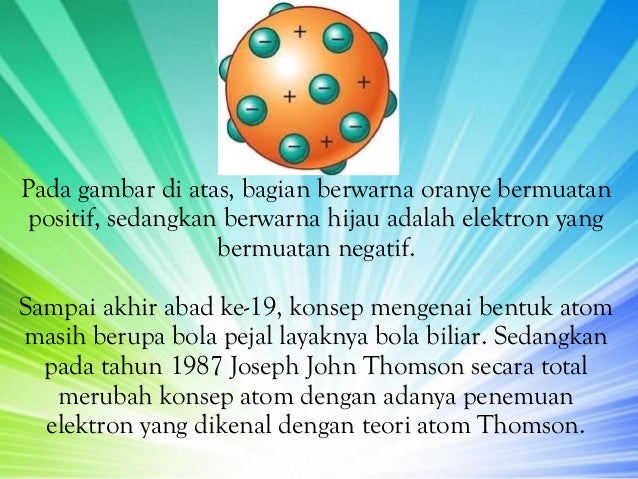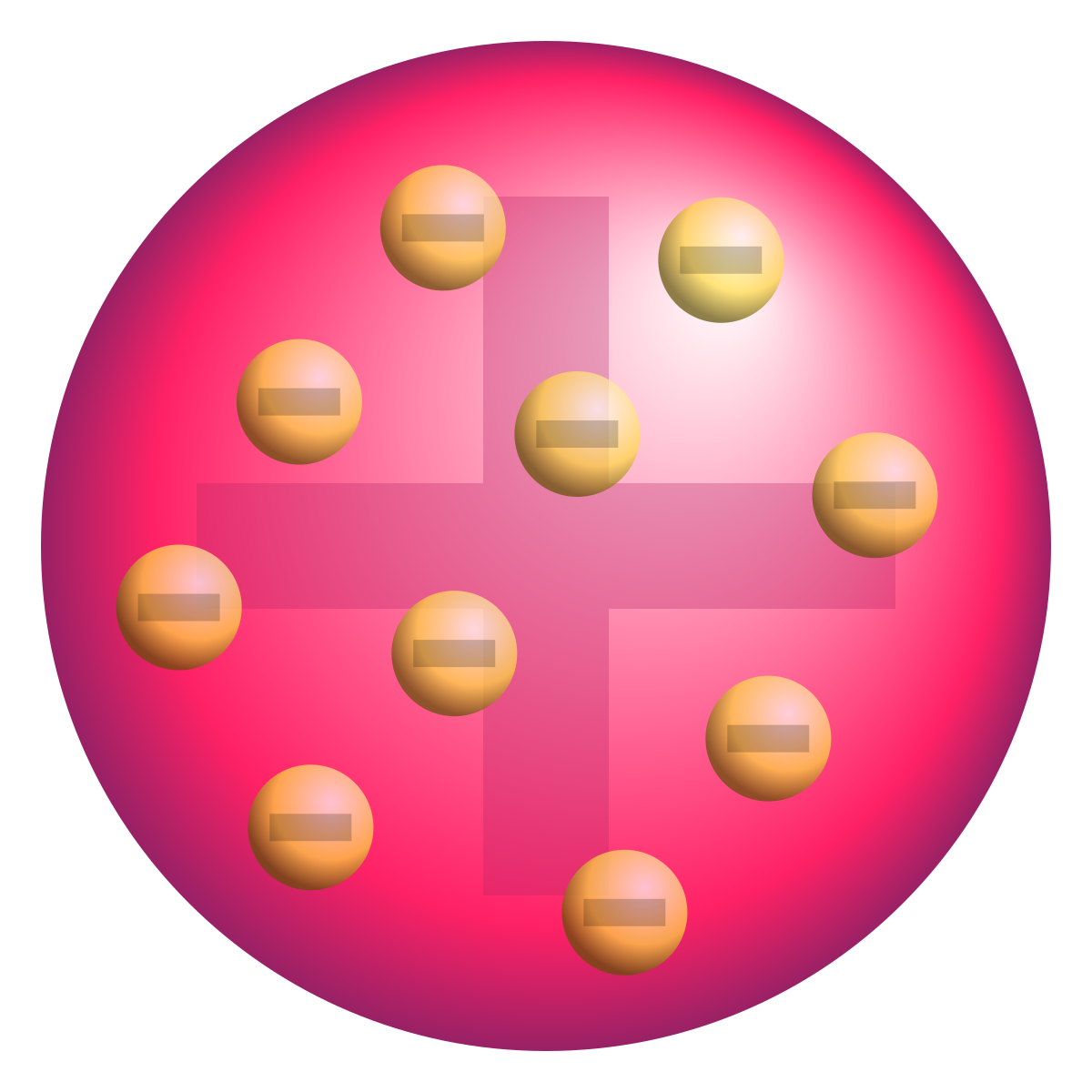William Thomson (also known as Lord Kelvin) envisioned the atom as a sphere with a uniformly distributed positive charge and embedded within it enough electrons to neutralize the positive charge. Thomson, who discovered the electron in 1897, proposed the plum pudding model of the atom in 1904 before the discovery of the atomic nucleus in order to include the electron in the atomic model. In Thomson's model, the atom is composed of electrons (which Thomson still called “corpuscles,” though G. Thomson proposed a model, sometimes called the 'plum pudding' or 'raisin cake' model, in which thousands of tiny, negatively charged corpuscles swarm inside a sort of cloud of massless positive charge. This theory was struck down by Thomson's own former student, Ernest Rutherford. Different kind of particle beam, Rutherford found evidence that. Thomson model of atom is the structure of an atom proposed by the scientist, J.J.Thomson, who was the first person to discover the electron. Soon after the discovery of the electron, the atomic model was proposed saying that the structure of an atom is like a “plum pudding”. Thomson model of atom is described base on three main facts.
Learning Objectives
- Explain what a model is.
- Describe the “plum pudding” model of the atom.

What is this model airplane composed of?
Millions of children over the years have enjoyed building models—this model airplane is one example of the types of models that can be constructed. Perhaps sixty years ago the models were made of balsa wood, a very light material. Parts would be cut by hand, carefully glued together, and then covered with paper or other fabric.
The development of plastics made the construction of model aircraft much simpler in many respects. And, the end-product is more durable and damage-proof.
A model serves a useful purpose—it gives us an idea of what the real thing is like. The model plane seen above has wings, a tail, and an engine just like the real thing. This model also has a propeller, as is the case with most small planes and some smaller passenger planes. However, the model is not the real thing. We certainly cannot fly people or cargo in the model (besides maybe a tiny mouse), but we can get some idea of what a real plane looks like and how it works.
Science uses many models to explain ideas. We model the electron as a very small particle with a negative charge. That gives us a picture, but a very incomplete one. This picture works fine for most chemists, but is inadequate for a physicist. Models give us a start toward understanding structures and processes, but certainly are not a complete representation of the entity we are examining.
Atomic Models

The electron was discovered by J.J. Thomson in 1897. The existence of protons was also known, as was the fact that atoms were neutral in charge. Since the intact atom had no net charge and the electron and proton had opposite charges, the next step after the discovery of subatomic particles was to figure out how these particles were arranged in the atom. This is a difficult task because of the incredibly small size of the atom. Therefore, scientists set out to design a model of what they believed the atom could look like. The goal of each atomic model was to accurately represent all of the experimental evidence about atoms in the simplest way possible.
Following the discovery of the electron, J.J. Thomson developed what became known as the “plum pudding” model in 1904. Plum pudding is an English dessert similar to a blueberry muffin. In Thomson’s plum pudding model of the atom, the electrons were embedded in a uniform sphere of positive charge like blueberries stuck into a muffin. The positive matter was thought to be jelly- like or a thick soup. The electrons were somewhat mobile. As they got closer to the outer portion of the atom, the positive charge in the region was greater than the neighboring negative charges and the electron would be pulled back more toward the center region of the atom.
However, this model of the atom soon gave way to a new model developed by New Zealander Ernest Rutherford (1871-1937) about five years later. Thomson did still receive many honors during his lifetime, including being awarded the Nobel Prize in Physics in 1906 and a knighthood in 1908.
Summary
- A model gives an idea of what something looks like, but is not the real thing.
- The “plum pudding” model of the atom consisted of a uniform sphere of positive charge with negative electrons embedded in the sphere.

Practice
Use the link below to answer the following questions:
- In the plum pudding model of the atom, what are the plums?
- In this model, what is the dough?
- What was the major purpose of the plum pudding model?
- How is this model different from modern modes of the atom?
Review
- What is a model?
- Why are models useful in science?
- In Thomson’s model of the atom, where were the electrons?
- What was the positive charge in this model?
- What kept the electrons in the atom?
- Whose model replaced Thomson’s?
- What awards did Thomson receive?
Glossary
- atomic model: When scientists set out to design a model of what they believed the atom could look like, the goal of each atomic model was to accurately represent all of the experimental evidence about atoms in the simplest way possible.
- plum pudding : In 1904 J.J. Thomson developed this model. The electrons were stuck into a uniform lump of positive charge like blueberries in a muffin. The positive matter was thought to be jelly- like or a thick soup. The electrons could move around somewhat. As they got closer to the outer portion of the atom, the positive charge in the region was greater than the neighboring negative charges and the electron would be pulled back more toward the center region of the atom.
Kelemahan Teori Atom Thomson
References
Gambar Atom Thomson
- User:Fokker/Wikimedia Commons. http://commons.wikimedia.org/wiki/File:3dx-I.JPG.
- User:Fastfission/Wikimedia Commons. http://commons.wikimedia.org/wiki/File:Plum_pudding_atom.svg.
